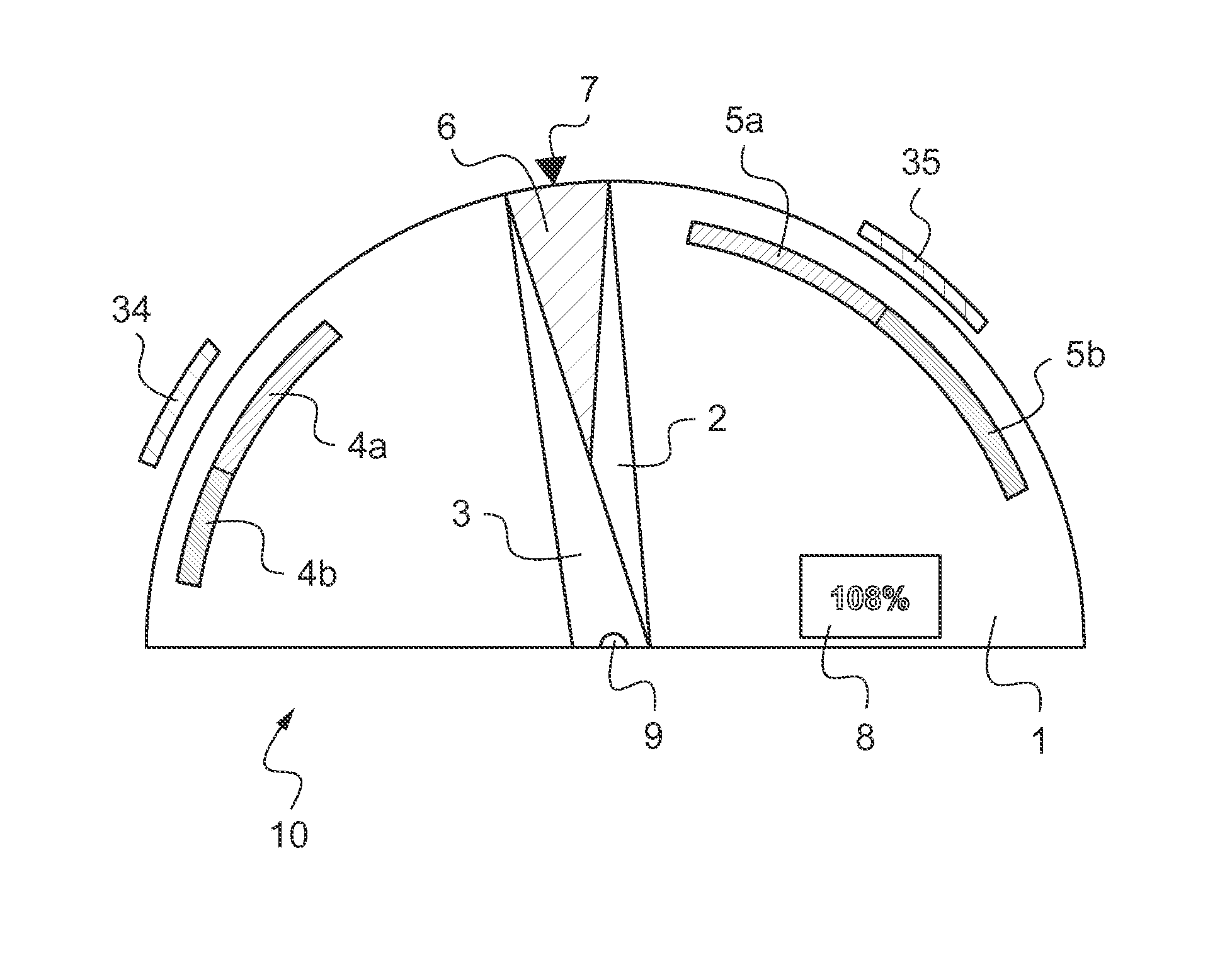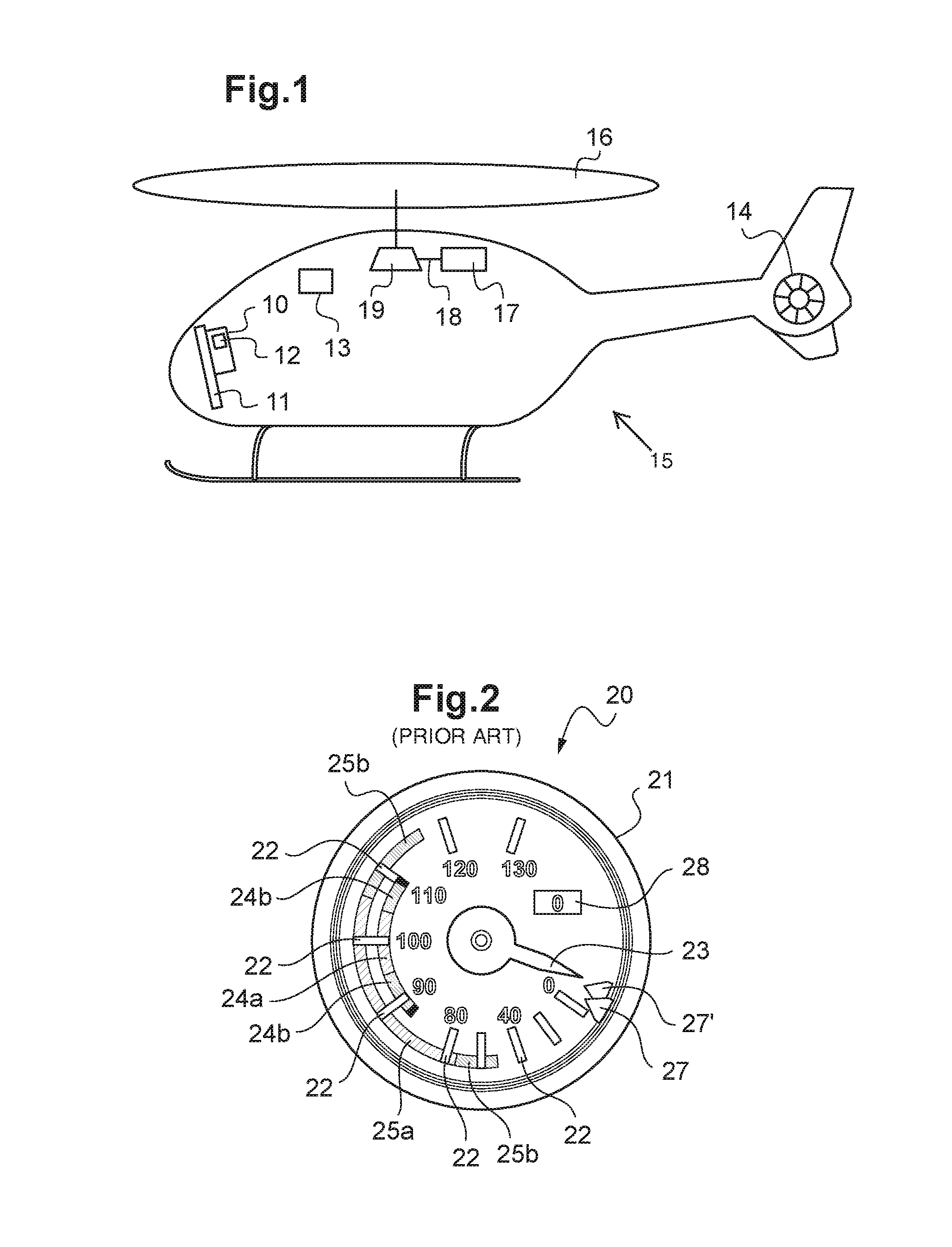Flight instrument displaying a variable rotational speed of a main rotor of an aircraft
a technology of flight instruments and rotating rotors, which is applied in the direction of aircrafts, rotors, aircraft components, etc., can solve the problems of engine flameout, mechanical, physical and aerodynamic limitations, and damage to mechanical power-transmission,
- Summary
- Abstract
- Description
- Claims
- Application Information
AI Technical Summary
Benefits of technology
Problems solved by technology
Method used
Image
Examples
Embodiment Construction
[0103]According to FIG. 1, a rotary-wing aircraft 15 includes a main rotor 16, a rear rotor 14, a turboshaft engine 17, and a main power transmission gearbox 19. The turboshaft engine 17 includes a free turbine 18 that rotatively drives the main rotor 16, as well as the rear rotor 14, doing so by means of the main power transmission gearbox 19. Furthermore, the aircraft 15 includes means 13 for determining atmospheric parameters and the flight parameters of the aircraft 15 that are useful in terms of the operation and piloting of this aircraft 15.
[0104]The aircraft 15 also includes an instrument panel 11 equipped with various instruments, including a flight instrument 10 that displays first pieces of information about the rotational speed of the main rotor 16 and second pieces of information about the rotational speed of the free turbine 18 of the turboshaft engine 17. This flight instrument 10 also includes computation means 12, and is shown in FIGS. 3 and 4.
[0105]FIG. 2 shows a fl...
PUM
 Login to View More
Login to View More Abstract
Description
Claims
Application Information
 Login to View More
Login to View More - R&D
- Intellectual Property
- Life Sciences
- Materials
- Tech Scout
- Unparalleled Data Quality
- Higher Quality Content
- 60% Fewer Hallucinations
Browse by: Latest US Patents, China's latest patents, Technical Efficacy Thesaurus, Application Domain, Technology Topic, Popular Technical Reports.
© 2025 PatSnap. All rights reserved.Legal|Privacy policy|Modern Slavery Act Transparency Statement|Sitemap|About US| Contact US: help@patsnap.com



